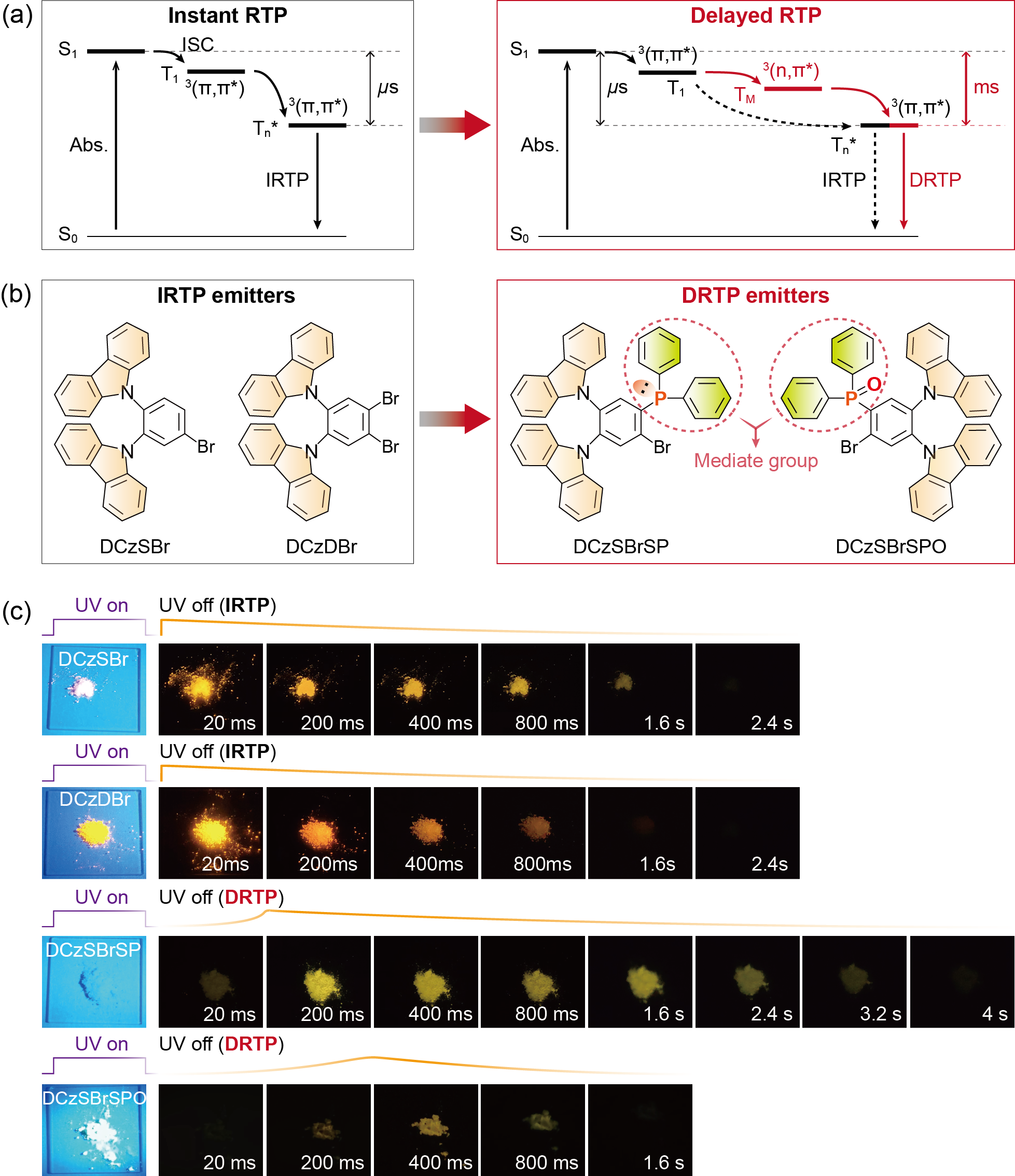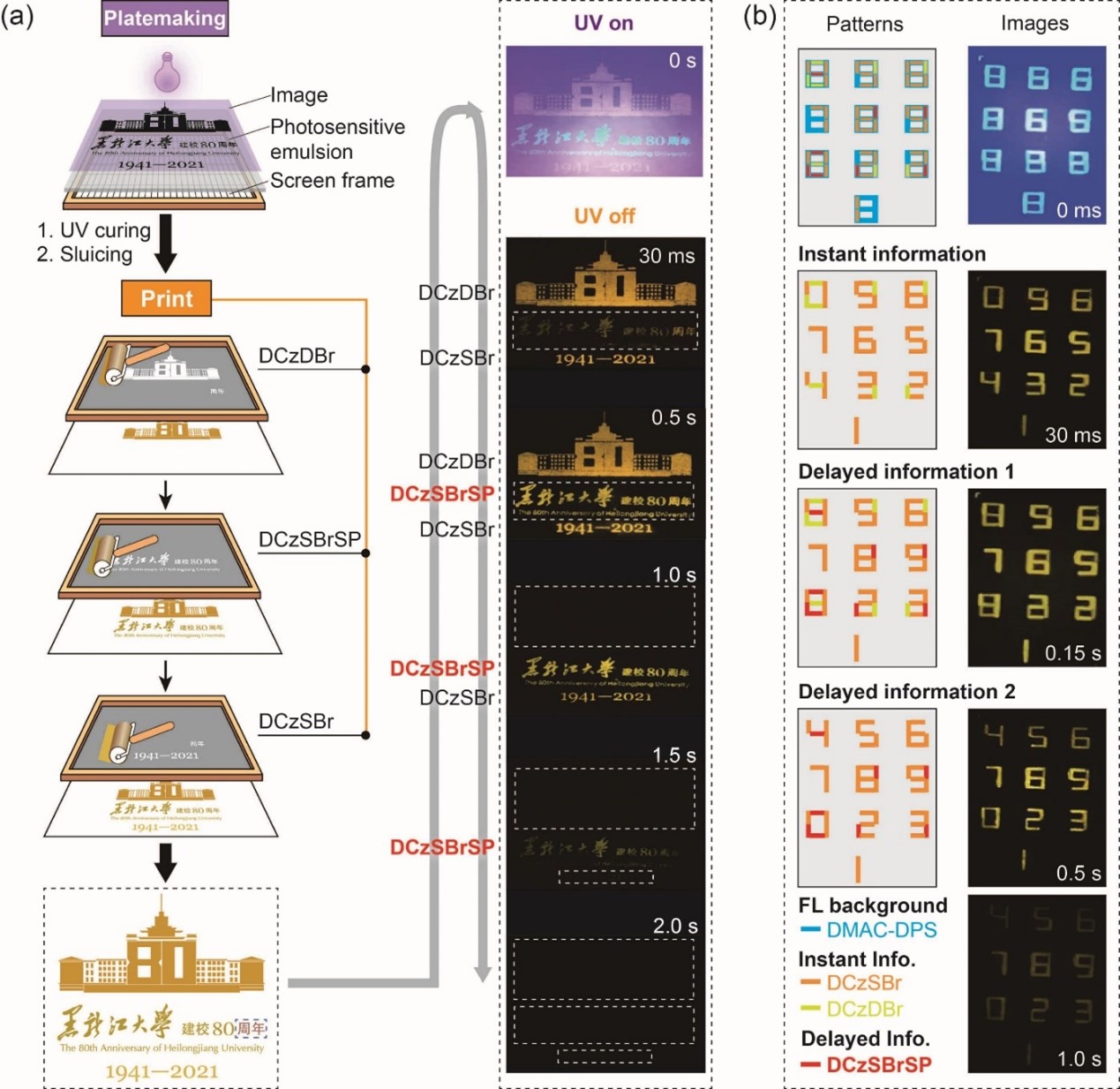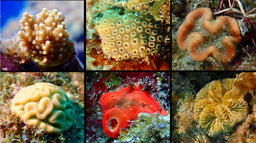Ultralong organic room temperature phosphorescence (UORTP) is an intriguing phenomenon, for which organic systems continue to emit for a period of time after the excitation source removed. Therefore, UORTP holds great promise for a lot of important applications, including information storage, anti-counterfeiting, biological imaging, sensing and so on. The most interesting advantage of UORTP materials is their emission lifetimes far beyond common organic molecules. Therefore, in the past decades, emission lifetimes and efficiencies of UORTP have been focused and greatly improved. However, for diverse optical applications, it is imperative to exploit more unique and complicated variations of UORTP, especially regarding to the time domain.
Currently reported UORTP materials exhibit unidirectional emission variation, namely intensity gradually decreasing after the excitation source removed, whose photophysical process is: after excitation to their first singlet excited states (S1), molecules further transit to the first triplet states (T1) through intersystem crossing, and then the excited energy is trapped by their stabilized triplet states (Tn*) for afterglow (Figure 1a). For aromatic UORTP systems, their T1→Tn* transitions at microsecond level are fast, due to the same 3(π, π*) characters, which can not be distinguished by human naked eyes, leading to the “unidirectional” intensity decrease. We can define this kind of UORTP phenomena as “instant” room temperature phosphorescence (IRTP). However, since there are multistep transitions between multiple excited states, it is possible to modulate UORTP process through changing excited-state characteristics and tuning transition sequences.
Obviously, to slow down the T1→Tn* transitions, triplet states different to 3(π, π*) should be incorporated, e.g. 3(n, π*), as an intermediate triplet state (TM) between 3(π, π*)-featured T1 and Tn* states, which can not only prolong the energy transfer process, but also markedly delay phosphorescence, since transitions between 3(n, π*) and 3(π, π*) states are forbidden (Figure 1a). In this case, unique “delayed” room temperature phosphorescence (DRTP) can be expected. We recently developed an IRTP molecule p-carbazolylphenyl-diphenylphosphine, whose diphenylphosphine group provides a 3(n, π*) energy level lower than the 3(π, π*) energy level of carbazole group (Angew. Chem. Int. Ed., 2023, 62: e202300980). The forbidden transition between them induced twofold increased IRTP lifetime. Obviously, phosphine groups with desired 3(n, π*) feature can be incorporated to provide the TM states, because the insulating and steric effects of sp3-hybrid phosphine groups have tunable triplet energy levels and suppressed interaction-induced triplet quenching.

Figure 1. Molecular Design of binary phosphine-carbazole systems for delayed room temperature phosphorescence (DRTP). (a) Illustrations of proposed energy transfer mechanisms for IRTP and DRTP. (b) Chemical structures of IRTP molecules and DRTP molecules. (c) Photos of DCzSBr, DCzDBr, DCzSBrSP and DCzSBrSPO powders excited with UV light at 365 nm and after UV excitation for 1.6-4.0 seconds.
With these considerations, we constructed two carbazolyl and bromine-substituted phosphine derivatives named DCzSBrSP and DCzSBrSPO, which reveal desired DRTP in contrast to phosphorus-free DCzSBr and DCzDBr with conventional IRTP (Figure 1b). After excitation removal, UORTP of DCzSBrSP and DCzSBrSPO firstly become stronger in the first dozens of milliseconds and then decrease (Figure 1c). Time resolved emission spectral investigation indicates that different to DCzSBr, only a small proportion of the T1 states for DCzSBrSP immediately transit to their Tn* states after dozens of microseconds, making its IRTP secondary. In opposite, the majority of their T1 states evolve to the TM states, which are embodied as the additional triplet bands arisen after T1 but before Tn* states. TM→Tn* transition takes dozens of milliseconds, resulting in DRTP clearly distinguished with naked eyes. Since its DRTP is stronger than its IRTP, DCzSBrSP reveals an interesting visual effect as its UORTP gradually emerging.
We demonstrated the unique applications of DRTP molecules for successive information display (Figure 4a). Through combining thermally activated delayed fluorescence (TADF), IRTP and DRTP materials, we developed nonlinear time-encoded security systems, which can not only show multiple information, but also increase information content at specific time (Figure 4b). The information breadth and depth of the systems using DRTP materials are far beyond what can be achieved by IRTP materials.

Figure 4. Incremental afterglow display based on DRTP. (a) Screen printing process of anti-counterfeiting pattern containing the information of the 80th anniversary for Heilongjiang University (left), and the changing process of emission patterns under 365 nm excitation at 0 s and at several representative stages at 30 ms and 0.5-2.0 s after UV turn-off (right). (b) Nonlinear time-encoded security application exampled with a password panel based on DCzDBr, DCzSBr and DCzSBrSP.
This work not only presents a fundamental for controllably modulating transition process in UORTP systems, but also provides a flexible platform for multiple time-resolution optical applications for a multi-level anti-counterfeiting, passive programmable display, and more.
Follow the Topic
-
Nature Communications

An open access, multidisciplinary journal dedicated to publishing high-quality research in all areas of the biological, health, physical, chemical and Earth sciences.
Related Collections
With Collections, you can get published faster and increase your visibility.
Clinical trials 2025
Publishing Model: Open Access
Deadline: Dec 31, 2025
Women's Health
Publishing Model: Hybrid
Deadline: Ongoing



Please sign in or register for FREE
If you are a registered user on Research Communities by Springer Nature, please sign in